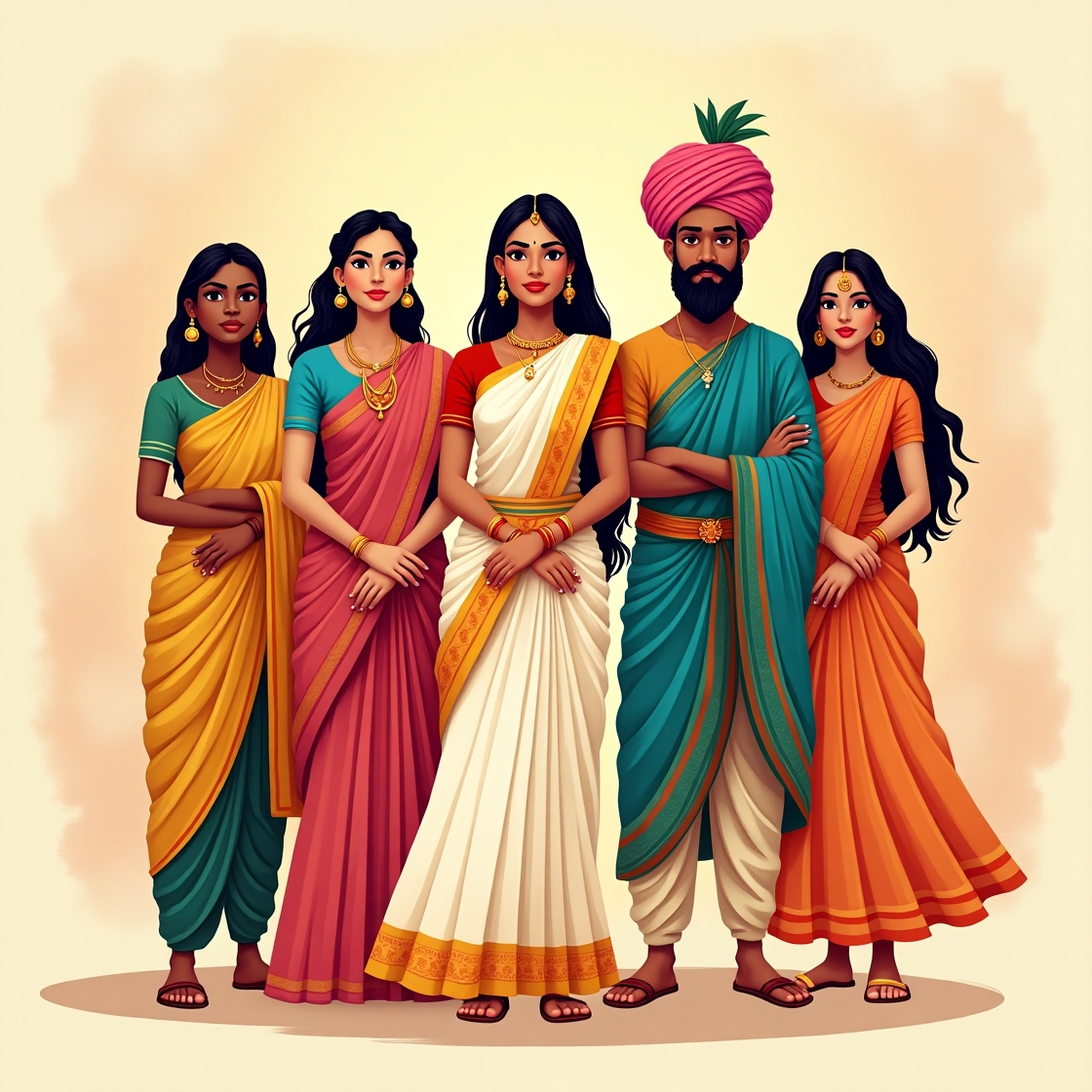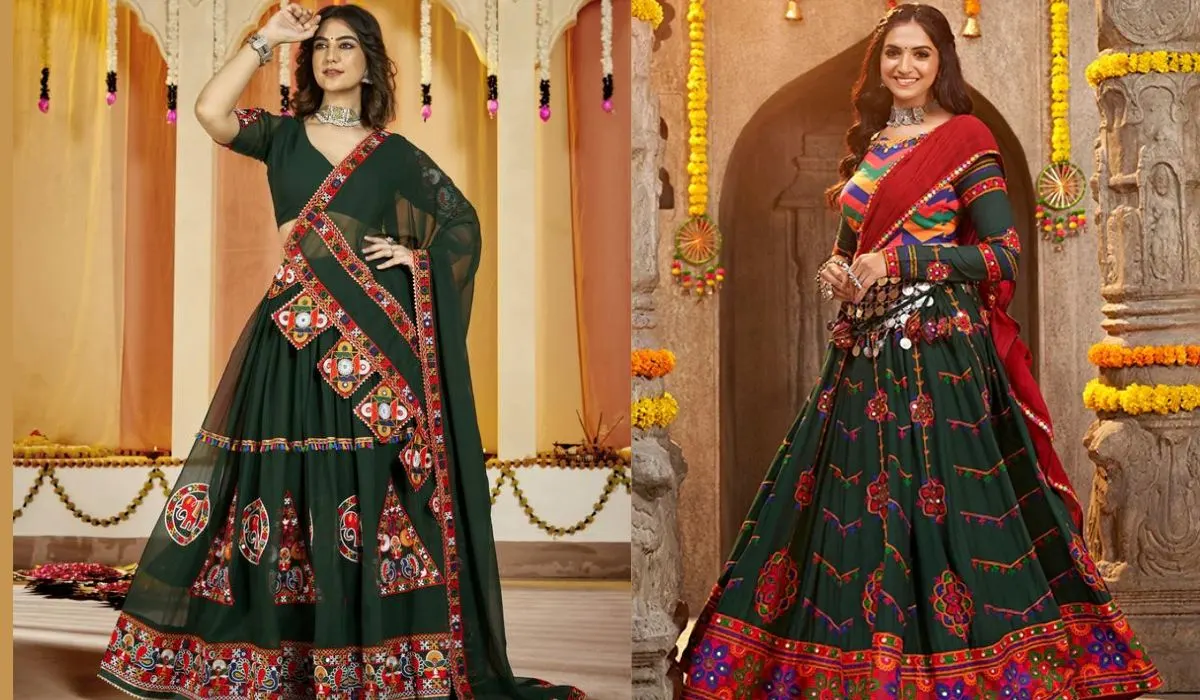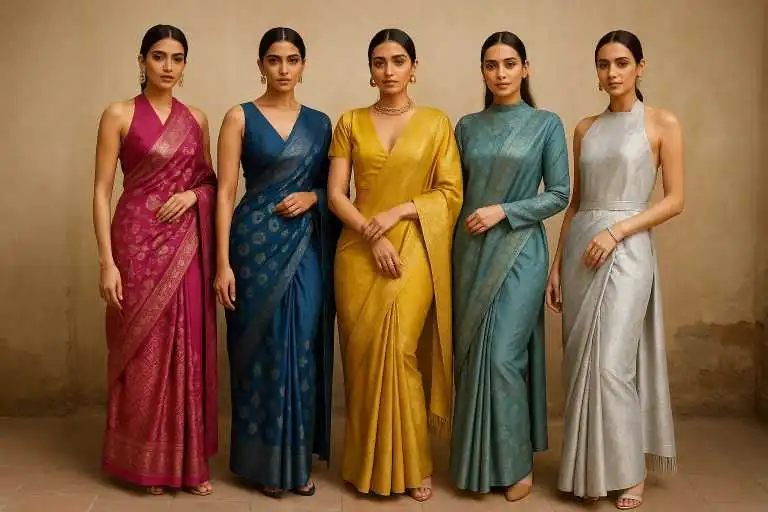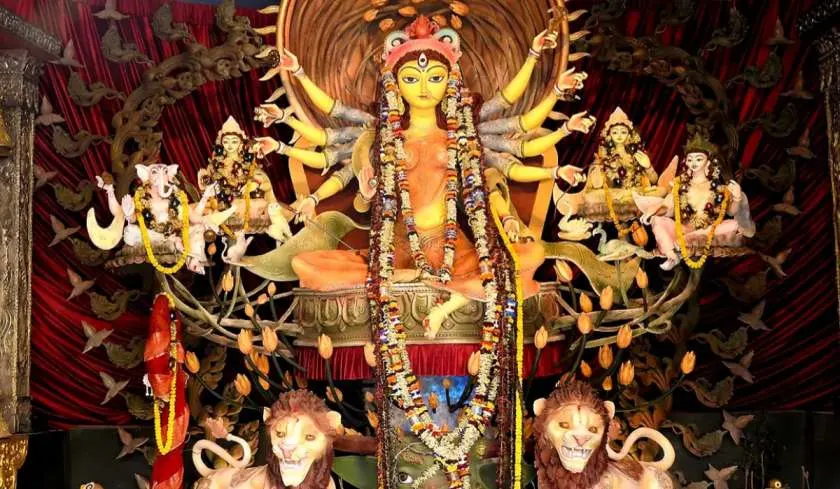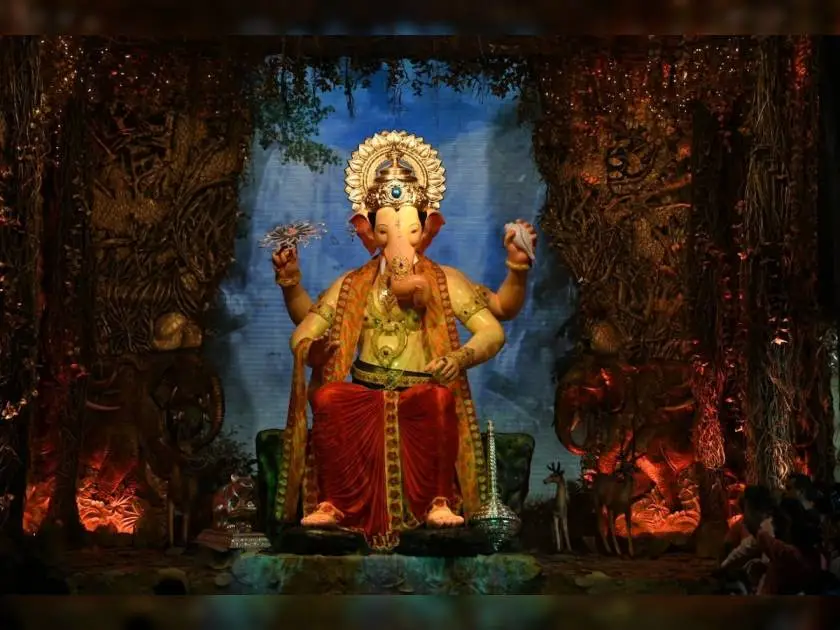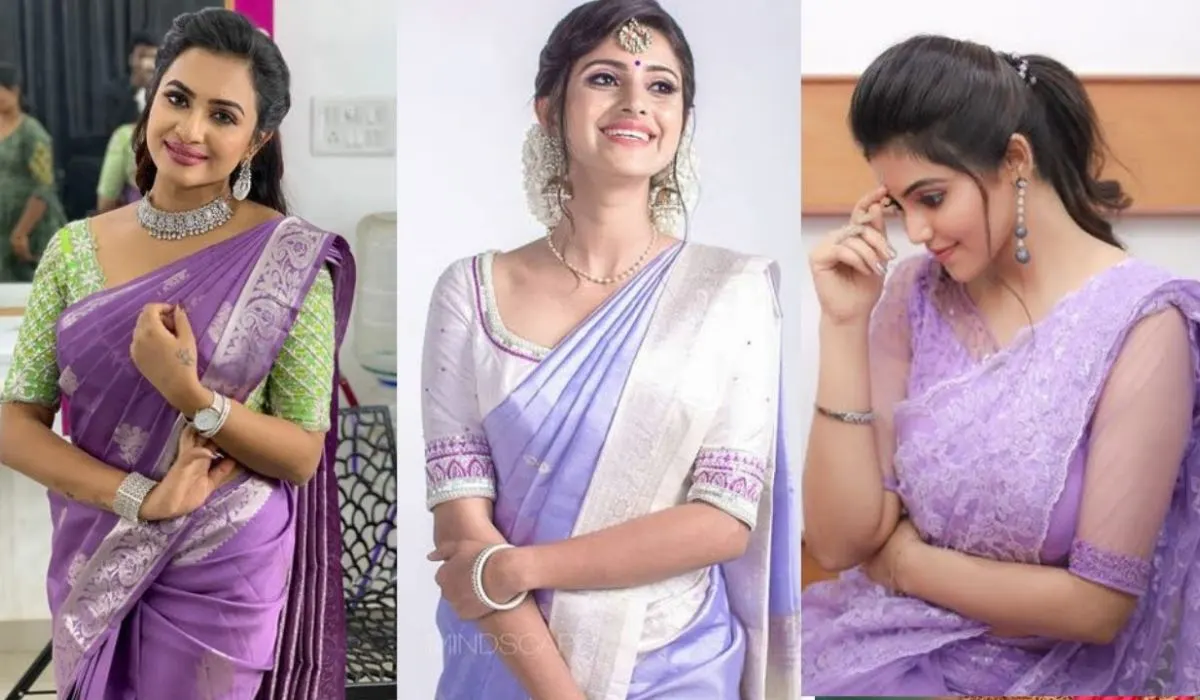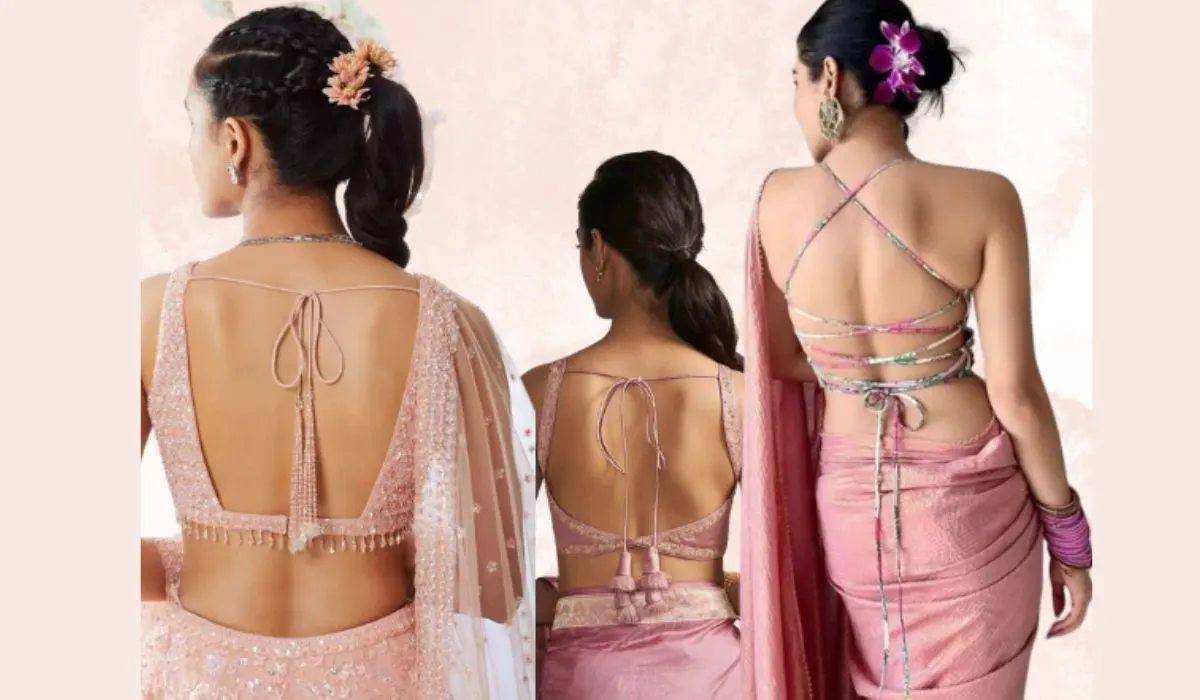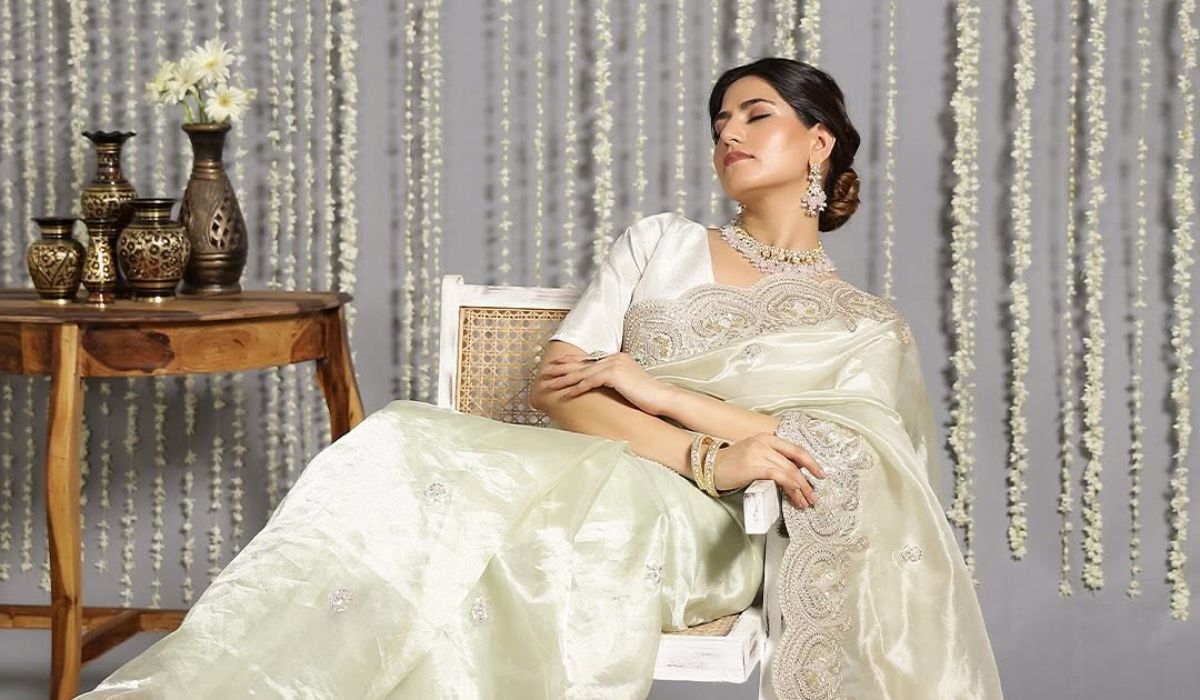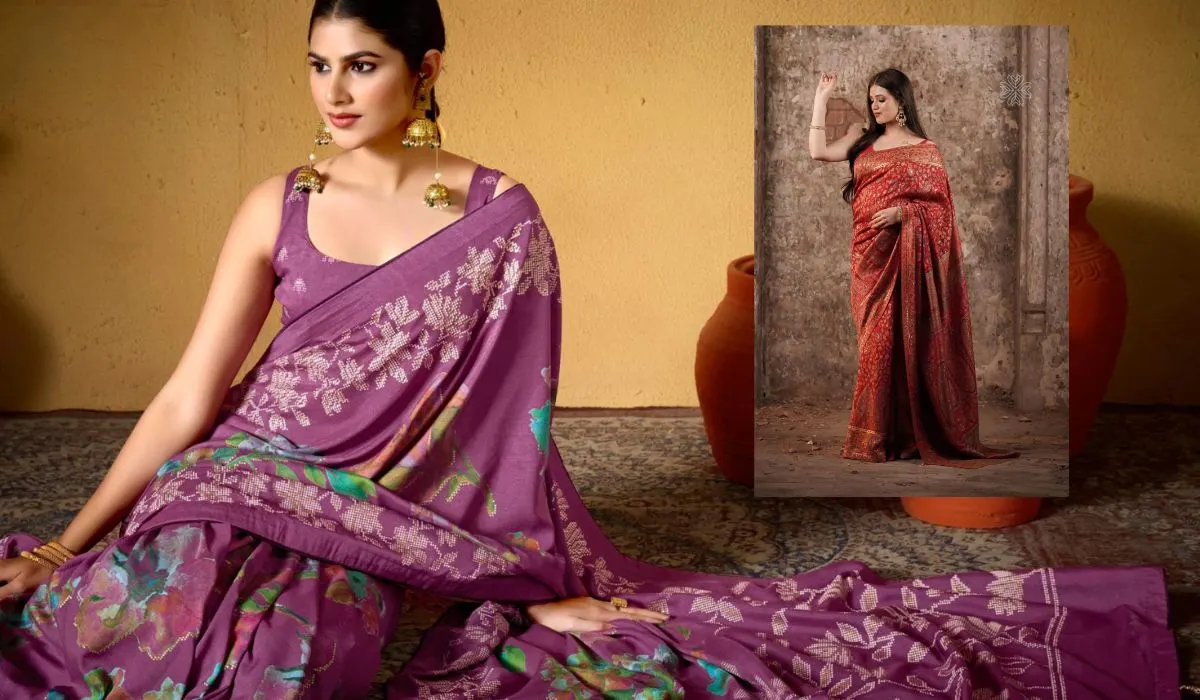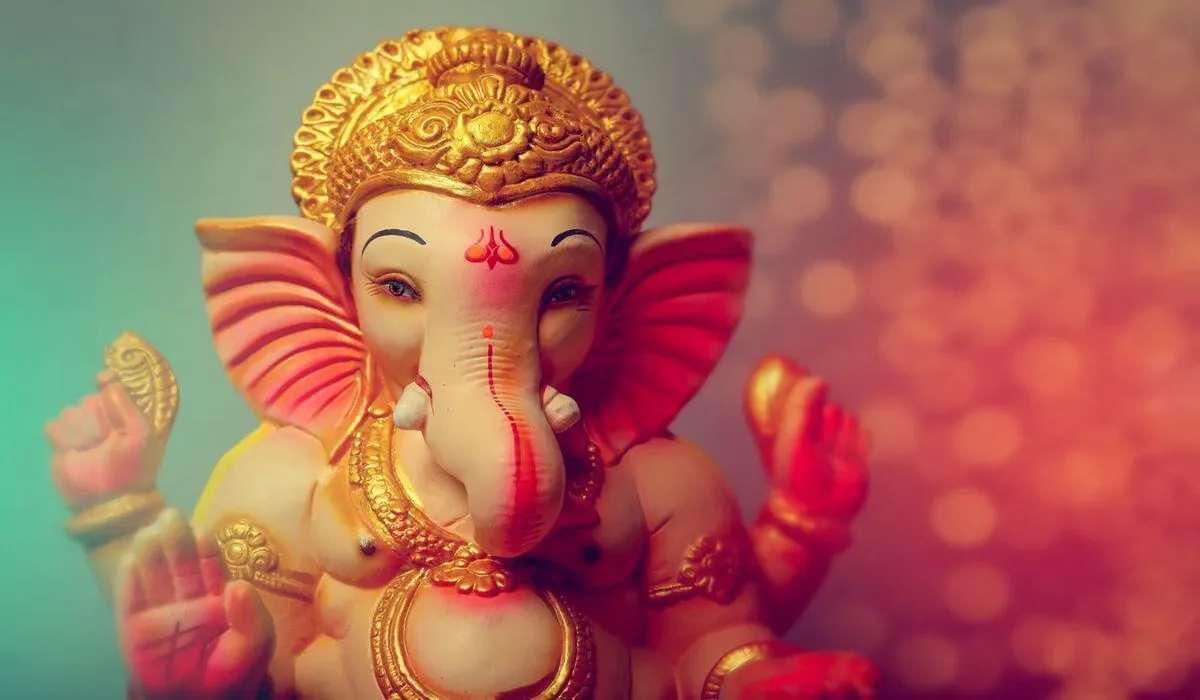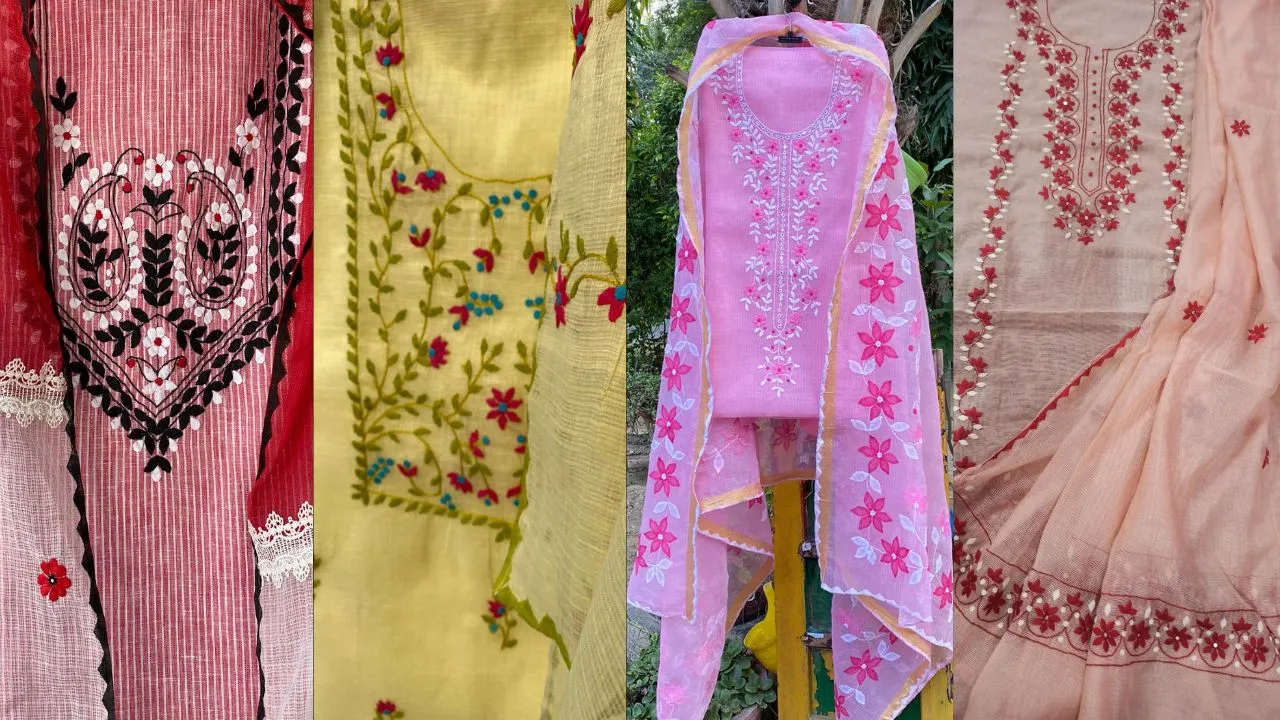India is a land of diverse cultures, languages, and traditions, and this rich diversity is beautifully reflected in its regional attire. Every state has its own distinctive style of clothing, often influenced by its history, geography, climate, and social practices. From the sari in the South to the phulkari embroidery of Punjab, regional Indian attire is not just a fashion statement—it’s a celebration of heritage, art, and identity.
In this blog, we’ll explore the cultural significance of regional Indian attire across different states, highlighting how clothing styles embody the essence of each region.

1. Sari and Dhoti (South India)
Cultural Significance: Traditional, Spiritual, and Graceful
In Southern India, particularly in Tamil Nadu, Andhra Pradesh, and Karnataka, the sari for women and the dhoti for men hold deep cultural value. These garments are worn during religious ceremonies, festivals, and weddings, symbolizing respect, purity, and tradition.
-
Sari: The traditional South Indian sari is often made from silk or cotton and is known for its vibrant colors and intricate patterns, especially in Kanjivaram silk saris from Tamil Nadu. These saris feature motifs inspired by nature and mythology, reflecting the region’s artistic heritage.
-
Dhoti: For men, the dhoti is a symbol of simplicity and cultural pride. It is typically worn in temples, during family celebrations, or important social gatherings. It represents humility, comfort, and connection to one’s roots.
In South India, attire is not only about looking good but also about spirituality and symbolism. Wearing traditional outfits during rituals and festivals reinforces a connection to one’s culture and ancestors.
2. Phulkari and Patiala Salwar (Punjab)
Cultural Significance: Vibrancy, Joy, and Community
In Punjab, both men and women wear outfits that reflect the region's lively spirit and strong cultural ties. The phulkari and Patiala salwar are two iconic pieces of traditional attire, deeply associated with Punjab's agriculture, festivals, and everyday life.
-
Phulkari: This hand-embroidered fabric is rich in floral patterns and vibrant colors, representing the agricultural landscape of Punjab. The embroidery is a symbol of love, fertility, and the beauty of nature. It was traditionally passed down through generations and worn during celebrations like weddings and festivals.
-
Patiala Salwar: The Patiala salwar, characterized by its loose, pleated design, offers comfort and flexibility. The combination of the salwar with a kurti or kurta has become a national trend, popularized by its fusion with modern fashion. This attire is often worn during traditional events and religious ceremonies.
In Punjab, attire like the phulkari and Patiala salwar showcases the region’s colorful, joyous culture and its connection to rural traditions.
3. Lungi and Sari (Kerala)
Cultural Significance: Serenity, Simplicity, and Local Craftsmanship
In Kerala, the lungi for men and the set sari for women hold significant cultural meaning. These garments are synonymous with the relaxed, coastal lifestyle of the state and reflect the spiritual and scenic ambiance of the region.
-
Lungi: Worn by men, the lungi is a light, comfortable garment, ideal for the tropical climate of Kerala. It’s a symbol of relaxation, humility, and the easygoing nature of the people. The lungi is worn during daily activities, festivals, and cultural performances.
-
Set Sari: The Kerala sari, or set sari, is traditionally made of white or off-white cotton with a gold border. This attire is worn by women during festivals, weddings, and temple visits. The simplicity of the design, along with its lightweight fabric, makes it both comfortable and culturally significant, embodying purity and grace.
The traditional attire in Kerala mirrors the spirituality and serenity of the state, aligning with the lifestyle influenced by lush landscapes and deep religious traditions.
4. Banarasi Sari (Uttar Pradesh)
Cultural Significance: Royalty, Artistry, and Spirituality
The Banarasi sari, woven with silk and gold thread, is a world-renowned garment that originates from Varanasi in Uttar Pradesh. Known for its intricate patterns and elaborate designs, this sari is synonymous with Indian royalty and heritage.
-
Banarasi Sari: Worn by brides during weddings or during important religious and cultural ceremonies, the Banarasi sari symbolizes luxury, artistry, and elegance. The motifs are often inspired by Hindu deities, temples, and Mughal architecture, making it a powerful representation of Uttar Pradesh’s cultural and religious history.
The Banarasi sari is not just an article of clothing; it’s an art form, passed down through centuries and celebrated for its rich history and craftsmanship.
5. Kilt and Chullo (Himachal Pradesh)
Cultural Significance: Mountainous Resilience, Tradition, and Craftsmanship
In the mountainous regions of Himachal Pradesh, traditional attire such as the kilt for men and the chullo for women holds great cultural value. These garments are designed to adapt to the cold, high-altitude environment, offering both warmth and flexibility.
-
Kilt: Worn by men, the kilt (a long, plaid cloth) is paired with a woolen coat. It’s suited for the cold weather of Himachal Pradesh and represents the resilient spirit of the people. This attire is often worn during cultural festivals, religious gatherings, and local events.
-
Chullo: Women in Himachal Pradesh traditionally wear the chullo, a long woolen shawl, often worn over their heads, shoulders, and around their bodies for warmth. The intricate designs and bright colors make it a visual representation of the region’s artisan craftsmanship.
In Himachal Pradesh, these garments speak to the region's adaption to nature, community values, and traditional craftsmanship.
6. Chania Choli and Dupatta (Gujarat)
Cultural Significance: Celebration, Energy, and Folk Tradition
The chaniya choli, often worn during festivals like Navratri, is one of the most iconic traditional garments of Gujarat. Paired with a dupatta (a long scarf), this outfit is colorful, lively, and rich in cultural significance.
-
Chaniya Choli: This ensemble features a colorful skirt (chaniya) and a blouse (choli), often adorned with mirror work, embroidery, and beads. It is designed to showcase the vibrant, celebratory nature of Gujarat. The chaniya choli is worn during Garba dances, weddings, and other significant celebrations.
-
Dupatta: The dupatta serves both a functional and decorative purpose, complementing the chaniya choli by adding movement and flow, while also offering modesty.
The chaniya choli is more than just an outfit; it represents the joyful, festive spirit of Gujarat, celebrating the energy and unity of its people.
Final Thoughts
Regional Indian attire is far more than just fashion—it’s a cultural symbol, a reflection of history, climate, geography, and social values. Every state in India brings its own unique twist to traditional clothing, making it not only beautiful but deeply meaningful. These garments connect us to our roots, our ancestors, and our rich, diverse culture, reminding us of the timeless beauty of Indian heritage.
Whether it's the elegance of the Banarasi sari or the practicality of the lungi, each piece of clothing tells a story that transcends generations. As we continue to celebrate and appreciate these styles, we honor the cultural tapestry that makes India’s fashion so exceptional.



